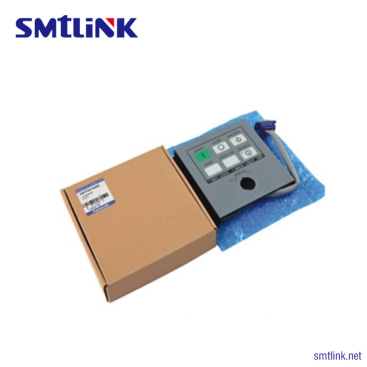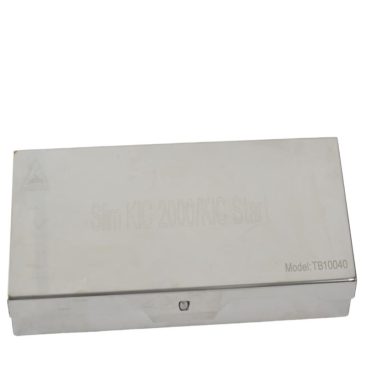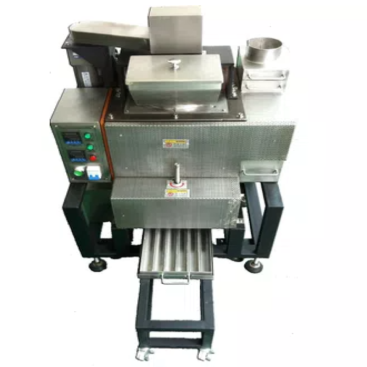

DI water treatment machine -smtlink
According to the user’s process requirements, water quantity, and other technical indicators, based on the quality of municipal tap water, the RO reverse osmosis + MB is designed and provided a mixed-bed ultrapure water preparation system (individual cities need to provide tap water quality reports). The ultrapure water system can be divided into three major components according to the composition function, namely the pretreatment system, the RO reverse osmosis system, and the MB mixed bed system.
DI water treatment machine
The RO reverse osmosis + MB is created and offered as a mixed-bed ultrapure water preparation system based on the process requirements of the user, the amount of water available, and other technical indicators, all of which are based on the quality of municipal tap water (individual cities need to provide tap water quality reports). According to composition function, the ultrapure water system may be split into three main parts: the pretreatment system, the RO reverse osmosis system, and the MB mixed bed system.
Pretreatment system: made up of multi-media filter (quartz sand, coconut shell activated carbon), cation softener, and pp cotton core fine filter; Its function is to remove impurities, organic matter, residual chlorine, etc. of the particles in the raw water, lower the water’s SDI value, and prevent the calcium and magnesium ions from reverse osmosis. The RO membrane system’s long-term, reliable functioning in the back-end process is protected from fouling on the permeable film. Reverse osmosis production water must be pre-treated to meet standards for effluent.
The capacity is intended to handle 1 m3/h. Reverse osmosis (RO) systems are primarily made up of a high-pressure pump, a membrane pressure vessel, and other membrane pressure vessel components. participate in the desalination of pre-water.
The composition and operation of pure water system units:
1 Pre-processing system
Including multi-media filter (quartz sand, coconut shell activated carbon composition) PP cotton core fine filter.
1.1、multi-media filter
1.11 The suspended material in the water is smaller in particular. Visible to the naked eye. These particles are mainly made of sediment、clay、Protozoa、algae, kind、bacteria、 as well as polymer organic matter and other compositions, often suspended in water. When tap water passes through quartz sand can remove large amounts of water
Particulate suspended solids activated carbon removes aquatic organisms from water. The fishy smell of mold and rot due to the reproduction and decay of plants or microorganisms smells the earthy smell or astringency emitted by the decomposition of organic matter, and residual chlorine left in disinfectant water. Ensure the positive of the subsequent system run normally. Reduction of residual chlorine in water plays a great role in the protection of softening resins and membrane modules, lengthening the reverse osmosis membrane and the service life of the mixed bed. Its filler is granular fruit shell-type activated carbon.
1.12 Rinse multi-media filter: (rinsing cycle: 1-2 times a week, according to local water quality). Flushing method: multi-media filter manual control to the positive flushing position, rinse for 15 minutes, and then dial to the positive flushing position, and then again, rinse for 10 minutes, after flushing is complete, dial the multi-way valve to the operating state.
1.2. Cation softener
To prevent the calcium and magnesium ions in the water from fouling on the reverse osmosis membrane, the membrane module is damaged by solid particles, and a large area of fouling occurs. The addition of a softener before R.O reverse osmosis can extend the system cleaning cycle time, extending membrane life and reducing costs. Rinse again with cationic softener (period: depending on water quality), method as follows:
(a) First add 5 kg of industrial salt to the industrial salt drum. And add water to dissolve 15 kg of a saturated solution.
(b) Backwashing: Dial the manual multi-way valve to the backwash position (BACKWASH) for 15 minutes and then dial its aspiration position (BRINE & SLOWR).
(c) Salt absorption: After dialing the manual multi-way valve to the salt suction position (BRINE & SLOWR), the salt water is automatically sucked (20-25 minutes).
(d) Fast flushing: After sucking 20 kg of industrial salt solution, dial the manual multi-way valve to the fast flush position (FAST RINSE). Rinse for 30 minutes.
(e) Sampling test: open the sampling valve and remove the sample water. It requires that the special demineralized water reagent be used for determination and inspection. Softening water is sampled, dripping into the reagent, if the color of the sample water turns blue to qualified, if purple or red is bad, it should be regenerated cleaning. After cleaning, the normal water supply (SERVICE) is carried out.
1.3, PP fine filter
The security filter is the last filter device before entering the R.O reverse osmosis host, which must ensure that tap water enters the reverse osmosis. The pollution index SDI in front of the host is stable below 4. Since the pure water recovery rate of the reverse osmosis device is generally only 50%-60%. The design water production is 1t/h.
Operating principle:
(a) PP cotton filter adopts a 5um pore size PP cotton filter element, water penetrates from the outside of PP cotton, and passes through micropores from the inner wall of PP cotton. The heart tube seeps out, thus filtering out tiny particles of impurities larger than the pore size.
(b) After a period of use of PP cotton, more and more impurity particles are trapped outside the outer pores until they fail, so please be sure at this time to replace the filter element, otherwise, it will contaminate the subsequent reverse osmosis equipment, the general replacement cycle is 1-2 months (according to the local
water quality and water use).
1.4 Notes:
(a) After the precision filter element is used, the impurities trapped in the micropores will become larger and larger until they fail. Please be careful at this time to make a replacement. Generally, once a month, the frequency of replacement depends on the quality of the raw water and the use time of the equipment, the first filter element can be checked regularly every week if it is completely contaminated and needs to be replaced, and after several repetitions to determine the appropriate more change cycles and keep going.
(b) Regularly check the SDI value of the effluent of the security filter every day, if the SDI value is greater than 4, please check the precision filter internal filter. If the core seal is damaged or loose, or if the filter element is contaminated, please replace the filter element in time.
2 RO reverse osmosis system
2.1 Introduction
The RO reverse osmosis unit is the heart of the entire pure water system, and the user should pay special attention to maintenance is usually transported in the RO system. When turning, the acquisition of various operating data should be appropriately adjusted with the design reference values of the system. Adjust when taking the effluent off the membrane.
The amount and working pressure are the main indicators, and the membrane is combined with the clogging and pollution of the membrane to adjust. And the inlet water pressure, out-water pressure, inlet water flow, outlet water flow, pure water conductivity, etc. should be recorded normally so that the system failure can be ascertained.
In general, the removal rate of organic matter by RO pure water system can reach 99 9%. For inorganic salts, it can reach 94%~about 98%. Since the RO system has the fine ability to efficiently deionize, it can be resisted by the water, both by the inlet of the system.
Compare it with the resistance value of the water outlet to get its work efficiency. The RO system removes minerals and organic matter due to the weekly periodic rinsing and medicinal washing operations so that stable water production quality can be maintained.
Native operational data is based on several factors:
1) The inlet water temperature is maintained within the design range (room temperature is about 25’C).
2) When entering the water, the indicators in the water must be the same as the water quality of municipal tap water.
3) The inlet water must go through the pretreatment equipment to reduce SDI and remove residual chlorine. This RO system adopts automatic control technology and is equipped with the necessary protection, such as water shortage, full water, low-pressure protection, etc., but it does not exist, this does not mean that the system can be operated unattended for a long time, please regularly record pressure, flow, temperature, and conductivity parameters. If you exceed the limit designed by this system, please adjust it in time, otherwise, it will cause damage to the RO film or system, which will affect the use of this machine’s life span.
Therefore, it is recommended that users operate and record in strict accordance with the design specifications, due to personnel operation errors and unfavorable supervision. The Company shall not be liable for any loss.
The pure water system process flow chart
| 1 |
2 |
3 | 4 | |||||||||||||||||||||||||||||||
|
|
|
5 | |||||||||||||||||||||||||||||||
|
||||||||||||||||||||||||||||||||||
8 |
||||||||||||||||||||||||||||||||||
9 |
6 |
|||||||||||||||||||||||||||||||||
7 |
||||||||||||||||||||||||||||||||||
The replacement instructions for consumables:






